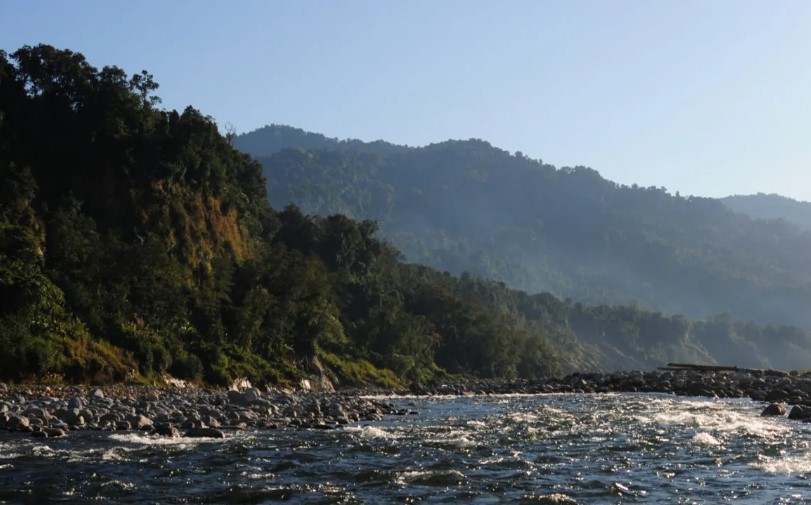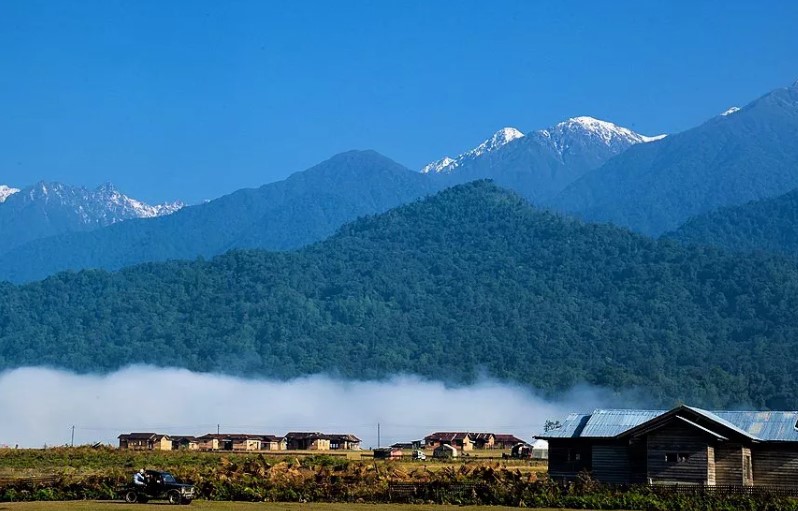
Embark on a journey through the verdant landscapes and rich biodiversity of Manas National Park in Assam, a treasure trove of natural wonders nestled in the heart of northeastern India. As a UNESCO World Heritage Site, Manas stands as a testament to the region’s ecological significance and conservation efforts. This article delves into the captivating allure of Manas, from its diverse wildlife and unique flora to the immersive experiences it offers to visitors.
Discover the best time to visit, how to reach this pristine wilderness, and the vital role of local communities in preserving this ecological gem. Join us as we explore the enchanting realm of Manas National Park, where every moment is an invitation to connect with nature in its purest form.
Introduction to Manas National Park
Manas National Park, nestled in the state of Assam in India, is a haven for nature lovers and wildlife enthusiasts. This lush expanse of wilderness boasts a rich history and is renowned for its stunning biodiversity.
Location and History
Located at the foothills of the Eastern Himalayas, Manas National Park is spread across the districts of Baksa, Barpeta, and Chirang in Assam. Established in 1928 as a wildlife sanctuary and later declared a national park in 1990, it holds significant historical and ecological importance.
UNESCO World Heritage Site Status
Manas National Park was designated as a UNESCO World Heritage Site in 1985 due to its exceptional natural beauty and unique ecosystems. This recognition underscores its conservation significance on a global scale.
—
Wildlife and Biodiversity of Manas National Park
Manas National Park is a treasure trove of diverse flora and fauna, offering a glimpse into the mesmerizing world of the wilderness.
Diverse Fauna and Flora
The park is home to a wide array of wildlife, including majestic elephants, elusive tigers, one-horned rhinoceroses, and vibrant bird species. Its verdant forests and grasslands support a rich tapestry of plant life, making it a paradise for nature enthusiasts.
Endangered Species at Manas
Manas National Park plays a crucial role in the conservation of several endangered species, such as the Bengal Florican, golden langur, and pygmy hog. The park’s efforts in protecting these species contribute significantly to global biodiversity conservation.
—
Best Time to Visit and How to Get There
To make the most of your visit to Manas National Park, it’s essential to plan your trip during the optimal time and consider convenient transportation options.
Seasonal Variations and Climate
The best time to visit Manas National Park is during the winter months from November to April when the weather is pleasant and ideal for wildlife sightings. Monsoon season, from May to September, brings heavy rainfall, making certain areas inaccessible.
Transportation Options to Manas National Park
Traveling to Manas National Park is convenient, with various transportation modes available. You can reach the park by road from nearby cities like Guwahati or opt for guided tours that include transportation for a hassle-free experience.
—
Activities and Attractions for Tourists
Manas National Park offers an array of exciting activities and attractions for visitors, promising an unforgettable wildlife experience.
Safari and Wildlife Viewing
Embark on thrilling safaris through the park’s wilderness, where you can spot diverse wildlife in their natural habitats. From majestic elephants to rare bird species, each safari offers a chance to witness the beauty of Manas up close.
Trekking and Bird Watching
For nature enthusiasts, trekking through the park’s trails provides a unique opportunity to explore its hidden gems. Bird watchers will be delighted by the park’s avian diversity, offering a chance to observe rare and colorful bird species in their natural environment.
Conservation Efforts and Success Stories
History of Conservation Initiatives
When it comes to protecting the incredible biodiversity of Manas National Park in Assam, conservation efforts have a rich history. From the establishment of the park as a wildlife sanctuary in 1928 to its designation as a UNESCO World Heritage Site in 1985, various initiatives have aimed to safeguard the flora and fauna within its boundaries.
Impact of Conservation Efforts
The impact of these conservation endeavors is evident in the thriving ecosystem of Manas National Park. Endangered species like the Indian rhinoceros, pygmy hog, and Bengal florican have found a safe haven here. The successful reintroduction of species like the golden langur and the great Indian one-horned rhinoceros showcases the positive impact of ongoing conservation efforts.
Accommodation Options and Amenities
Lodging Choices Inside and Outside the Park
Whether you prefer the rustic charm of jungle lodges or the comforts of luxury resorts, Manas National Park offers a range of accommodation options to suit every traveler’s preferences. From cozy cottages nestled amidst verdant forests to eco-friendly tented camps offering a closer connection to nature, there’s something for everyone.
Facilities and Services for Visitors
Visitors to Manas National Park can look forward to a host of amenities to enhance their experience. From guided safaris and nature walks to cultural performances by local communities, the park ensures that guests not only enjoy the beauty of the wilderness but also gain insight into the rich cultural heritage of the region.
Cultural Insights and Local Community Engagement
Indigenous Communities around Manas
The indigenous communities living in and around Manas National Park play a crucial role in its conservation and management. These communities, such as the Bodo and Adivasi tribes, have a deep connection to the land and wildlife, offering valuable insights into sustainable living practices and traditional knowledge of the environment.
Cultural Experiences for Tourists
For tourists seeking a deeper understanding of the cultural fabric of Assam, engaging with local communities around Manas National Park is a must. From traditional dance performances to handicraft demonstrations and visits to nearby villages, these cultural experiences not only enrich the travel experience but also contribute to the socio-economic development of the region.
As the sun sets over the majestic landscapes of Manas National Park, leaving behind a tapestry of memories and experiences, one thing remains certain – the enduring charm and importance of this natural haven.
Whether you were captivated by the sight of a majestic tiger or enchanted by the melodious calls of rare birds, Manas leaves an indelible mark on all who venture into its embrace. With its conservation successes and cultural richness, Manas stands as a beacon of hope for the preservation of our planet’s precious ecosystems.
As you bid farewell to this enchanting sanctuary, may the spirit of Manas inspire you to cherish and protect the wonders of our natural world, now and for generations to come.
Frequently Asked Questions (FAQ)
1. Is Manas National Park open throughout the year?
2. What are the accommodation options available at Manas National Park?
3. Are there any specific guidelines or restrictions for visitors while touring Manas National Park?
4. How can visitors contribute to the conservation efforts at Manas National Park?








